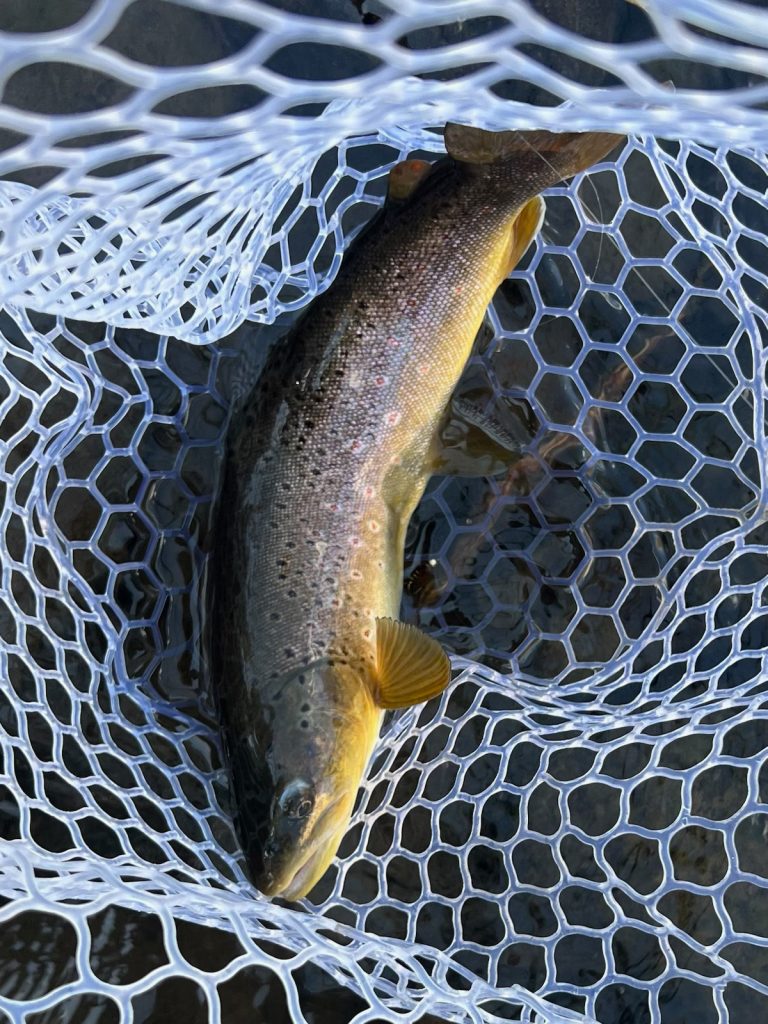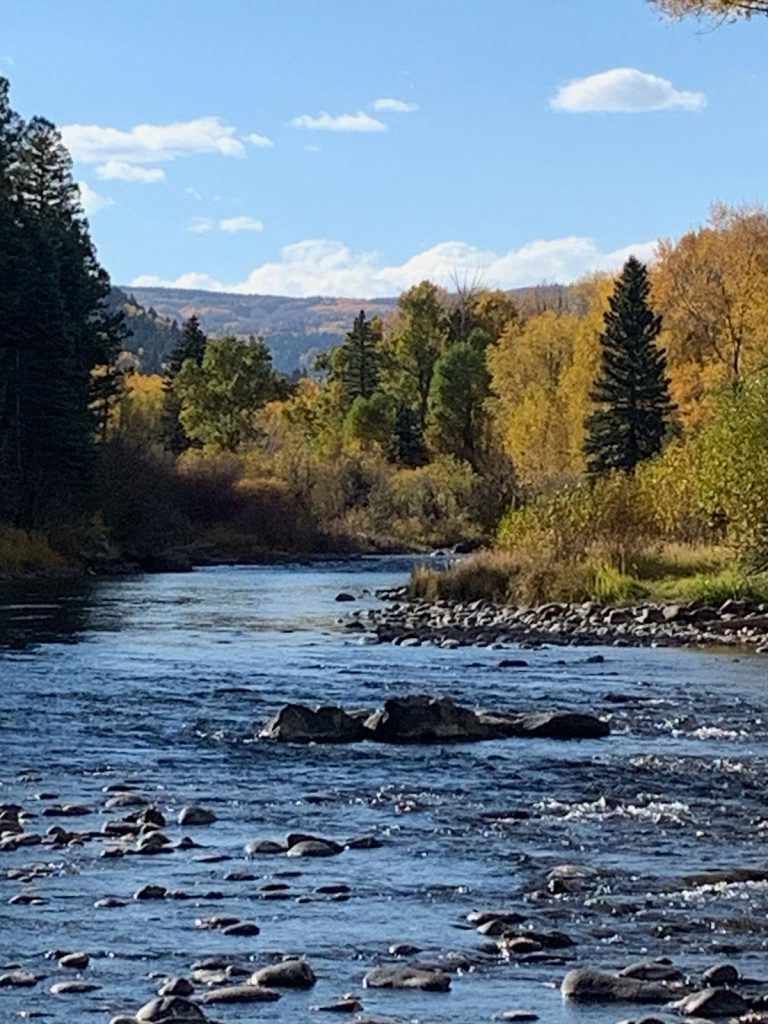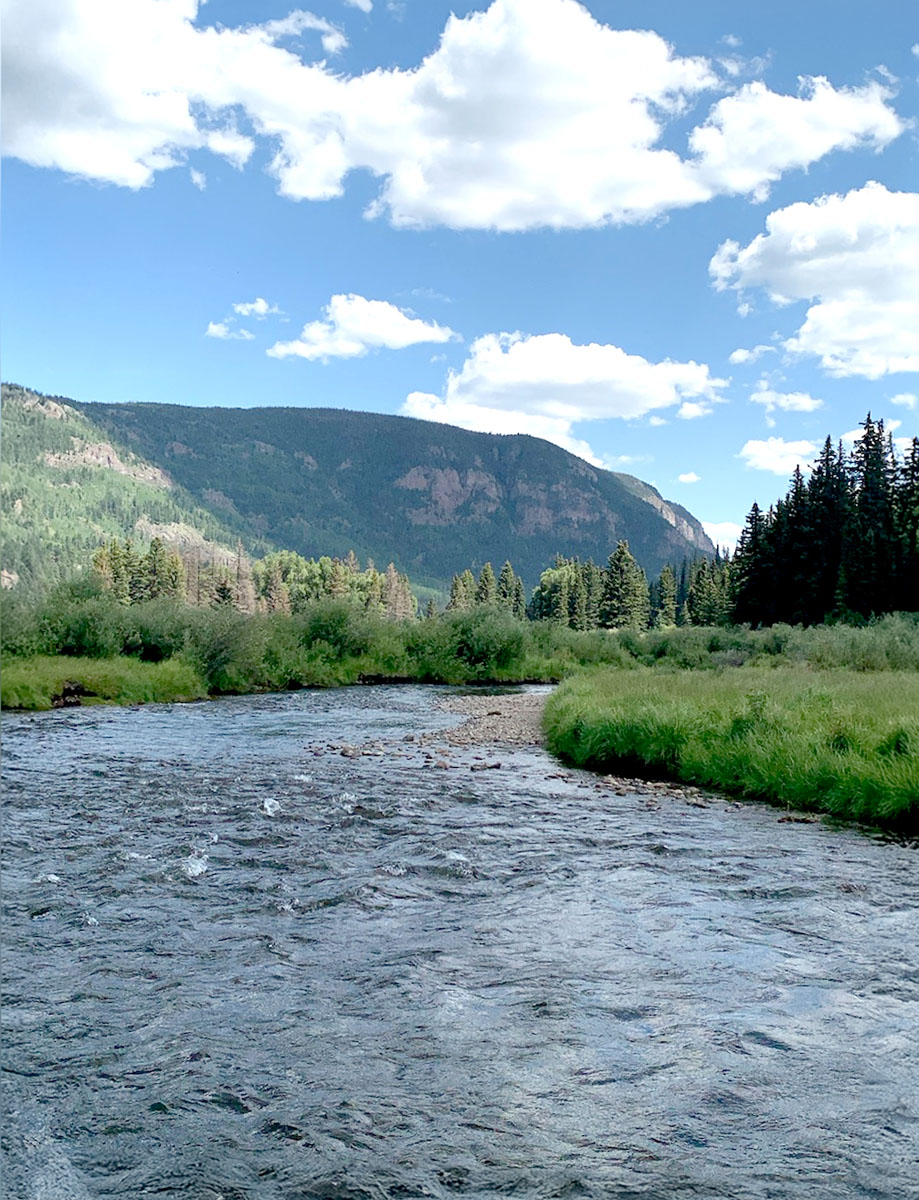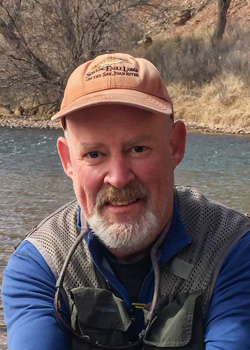
It seems like just yesterday that the mountains were waking up from one of the more normal of recent winters. We had snow, the streams ran full, and the Rio Grande caddis hatch reminded us that along with taking away, nature will always giveth. The summer monsoons were also close to normal. Nothing beats the smell of rain on sagebrush, or rain on anything. Our zucchini garden definitely thought so.
But just like that, it’s over. Autumn has arrived to read us a few more stories before tucking us in. They’re good stories to be sure, hillslopes covered with rusty orange scrub oak, rosehips on the streamside bursting red, the bull brown trout suiting up in their brightest orange and yellow to impress the ladies.
Nothing like a ticking clock to force you to make the best of what’s left. I plan on saying goodbye to the gorge and hopefully fish the Valles Caldera while the meadows are still tan, before they’re buried in white. Last week I fished the Conejos near Mogote, my main purpose being seeing the aspens I knew would be in full swing. I was wrong, though. Most of the leaves had already dropped, even on San Antonio Mountain, which made me a bit sad.
Anyone who’s driven the Rio Grande canyon from Velarde to Taos, however, can take solace in the fact that while the aspens may be done for the year, the cottonwoods will always have the last word. Thank God for the cottonwoods on the Conejos. They made up for a slow day of fishing.
The thing about fall is that the fish won’t always be where you expect them to be. And thanks to the onset of cold nights and their numbing effect on metabolism, fish won’t always be as hungry as during a pleasant summer day when bugs flutter all around you. You have to work hard in the fall. I’ve learned, thanks to the trout habit of hanging out in ridiculously shallow water, to fish every inch of a river. My theory is that the shallows are where it’s warmest, and where a stray grasshopper may fall in to provide a delicious snack.
Spotting brown trout in the shallows is possibly a signal that their minds may not be on eating at all. This is especially true at the tailouts of pools where there’s gravel nearby. Fall is spawning time for browns, and if you see one near gravel, look around to make sure there’s not another fish close by. If you see two fish and clean gravel, leave them alone. Give the gravel (their nest) a wide berth and find some new water. These fish are in love, as much as trout can be.
It seems I have to remind myself every year that fall is why I fish. When I was young, I felt something akin to pride that I recognized the beauty of nature, that I didn’t just walk through it without being affected by its power. There was a permanence to it. Being alone in the mountains was inspiring; the singing birds and compliant trout, it would always be like this, 24-7, 365.
Fall was and is the lesson that this has never been true. Things change, autumn says, the good times never last. But then again, it whispers, with a warm afternoon breeze, neither do the bad.




